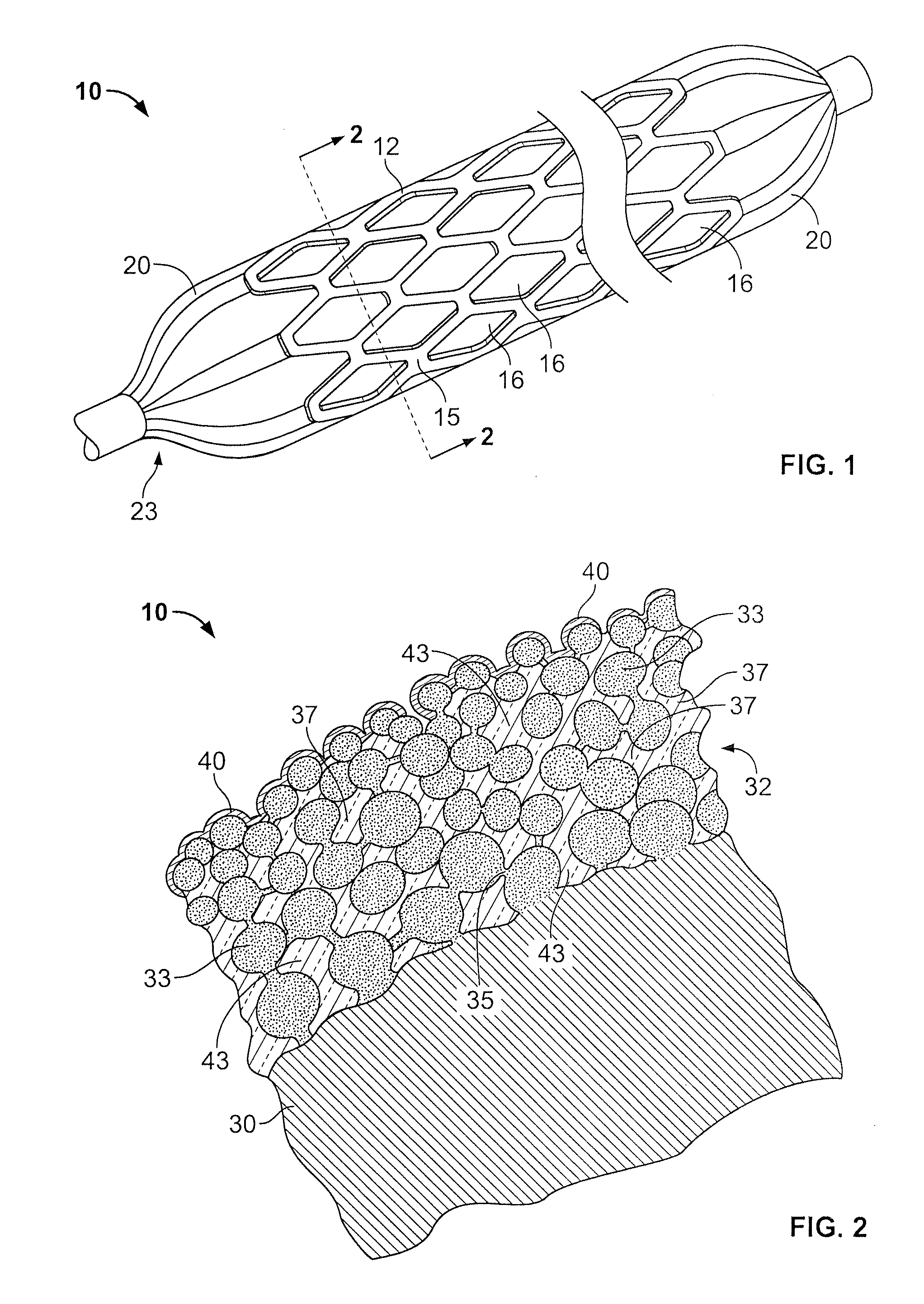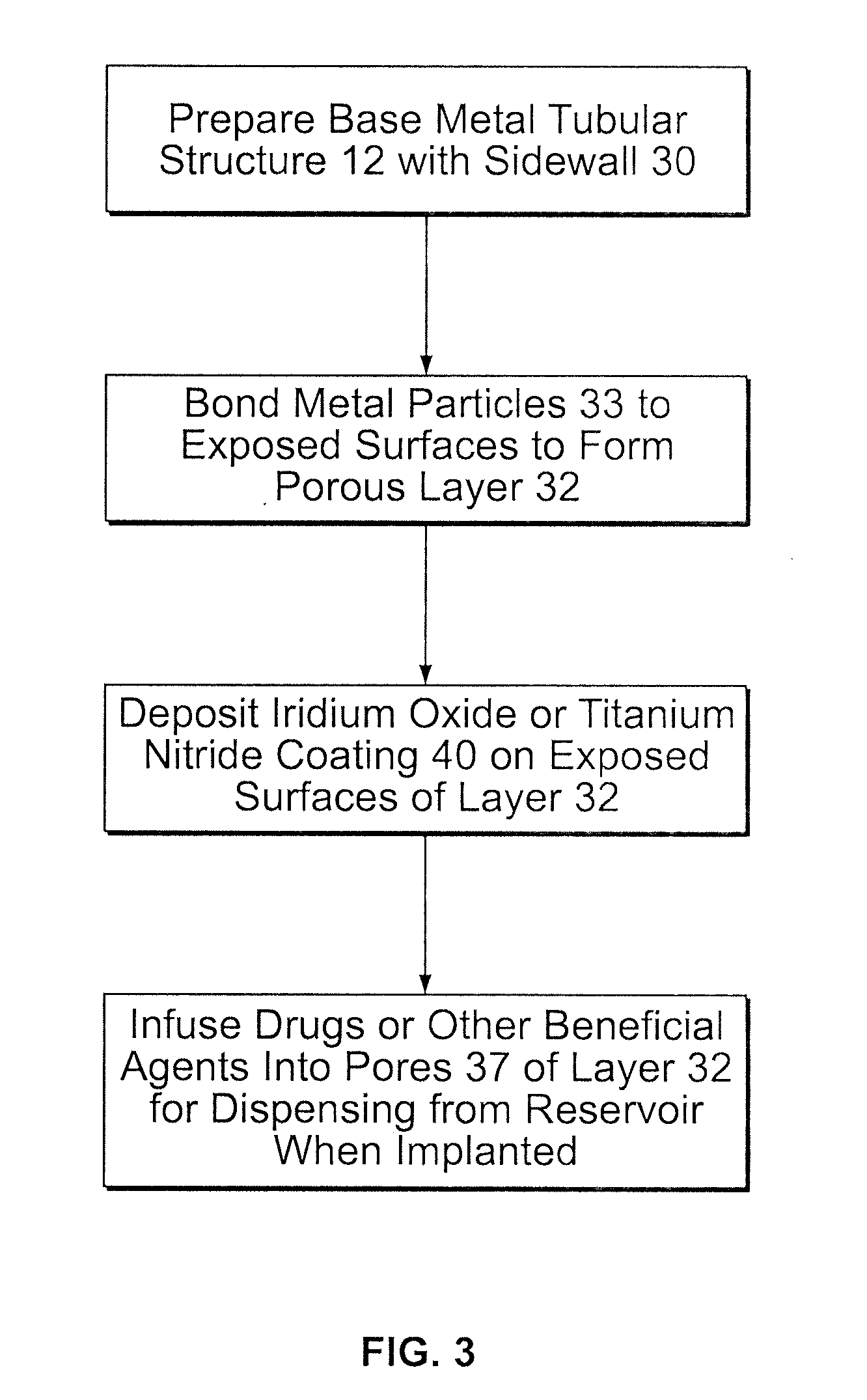Drug-releasing stent with ceramic-containing layer
a technology of stent and ceramic layer, which is applied in the field of stents, can solve the problems of difficult surface provision of stent, new blockage, acute blockage, etc., and achieve the effects of preventing restenosis, high fluoroscopic visibility, and reducing the risk of infection
- Summary
- Abstract
- Description
- Claims
- Application Information
AI Technical Summary
Benefits of technology
Problems solved by technology
Method used
Image
Examples
Embodiment Construction
[0021]In FIGS. 1 and 2 (the drawings are not intended to be to scale), a stent 10 may be of generally conventional configuration, with cylindrical structure having open ends, and of any known type such as the Palmaz-Schatz zig-zag tube type shown, or a mesh type, for example. The material of which the metal member 12 of the stent is composed, i.e., the wire or the solid tube, may be of any conventional and suitable type, such as medical grade 316L stainless steel, chromium, nickel, titanium, iridium or nitinol, for example, which is biologically compatible (biocompatible) with the fluids and tissue of the human body. In any event, the sidewall 15 of member 12 is provided with a multiplicity of openings 16 that extend entirely through the wall. For the mesh type stent, the openings are formed as a natural part of the formation of the mesh itself. If the stent is a helical spring-type of structure, the openings are simply the continuous winding space between the coils. For a solid tub...
PUM
| Property | Measurement | Unit |
|---|---|---|
| thickness | aaaaa | aaaaa |
| diameter | aaaaa | aaaaa |
| thickness | aaaaa | aaaaa |
Abstract
Description
Claims
Application Information
 Login to View More
Login to View More - R&D
- Intellectual Property
- Life Sciences
- Materials
- Tech Scout
- Unparalleled Data Quality
- Higher Quality Content
- 60% Fewer Hallucinations
Browse by: Latest US Patents, China's latest patents, Technical Efficacy Thesaurus, Application Domain, Technology Topic, Popular Technical Reports.
© 2025 PatSnap. All rights reserved.Legal|Privacy policy|Modern Slavery Act Transparency Statement|Sitemap|About US| Contact US: help@patsnap.com



